PHOTOS: Typhoon Hagibis leaves dozens dead in Japan
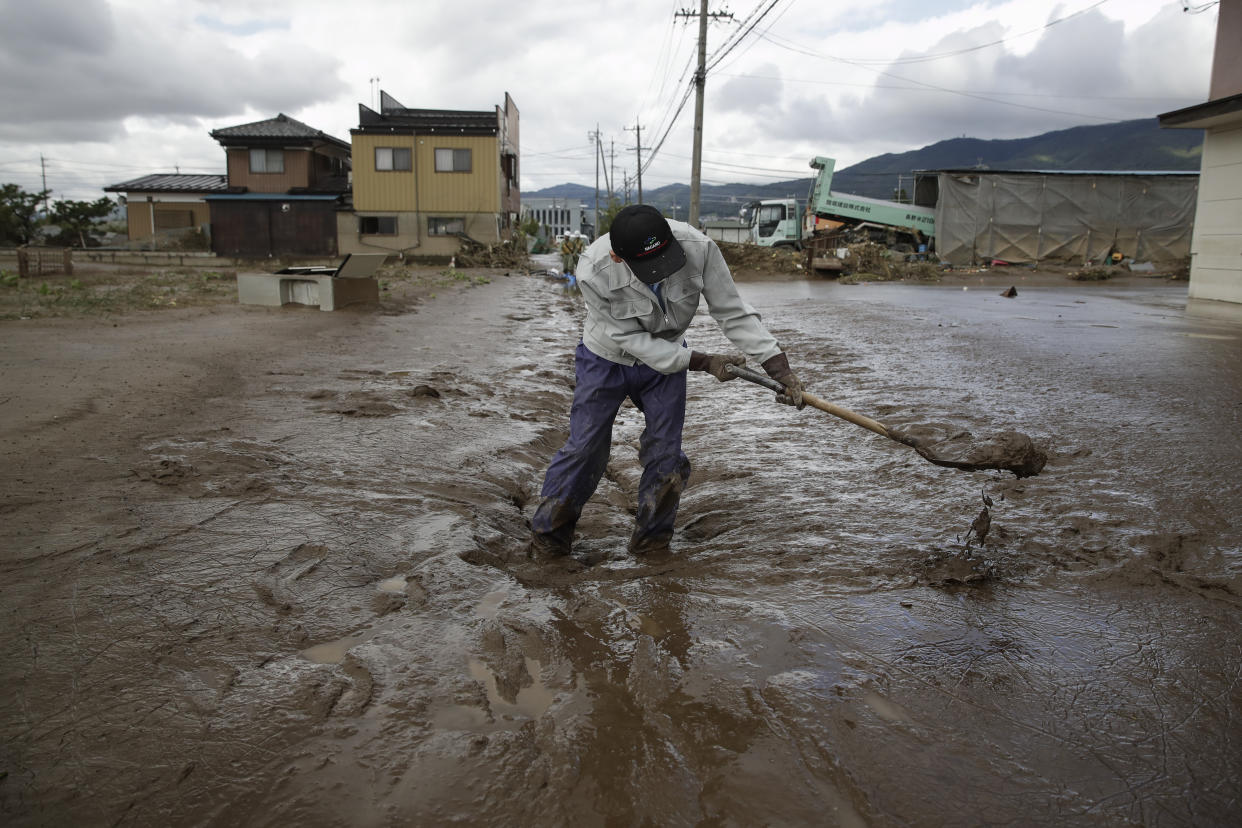
NAGANO, Japan — The toll of death and destruction from a typhoon that tore through central and northern Japan climbed Tuesday, as the government said it was considering approving a special budget for the disaster response and eventual reconstruction.
Prime Minister Shinzo Abe told a parliamentary session that the number of deaths tied to Typhoon Hagibis had climbed to 53 and was expected to rise, as at least another nine people are presumed dead. Japan's Kyodo News agency, citing its own tally, put the death toll at 69.
Abe pledged to do the utmost for the safety and rescue of those missing or those who had to evacuate.
"We put the people's lives first," he said.
Hagibis hit Japan's main island on Saturday with strong winds and historic rainfall that caused more than 200 rivers to overflow, leaving thousands of homes flooded, damaged or without power. Rescue crews on Tuesday were still searching for those missing, thought to number about 20.
Some 34,000 homes were without power and 110,000 lacked running water. More than 30,000 people were still at shelters as of late Monday, according to the Cabinet Office's latest tally.
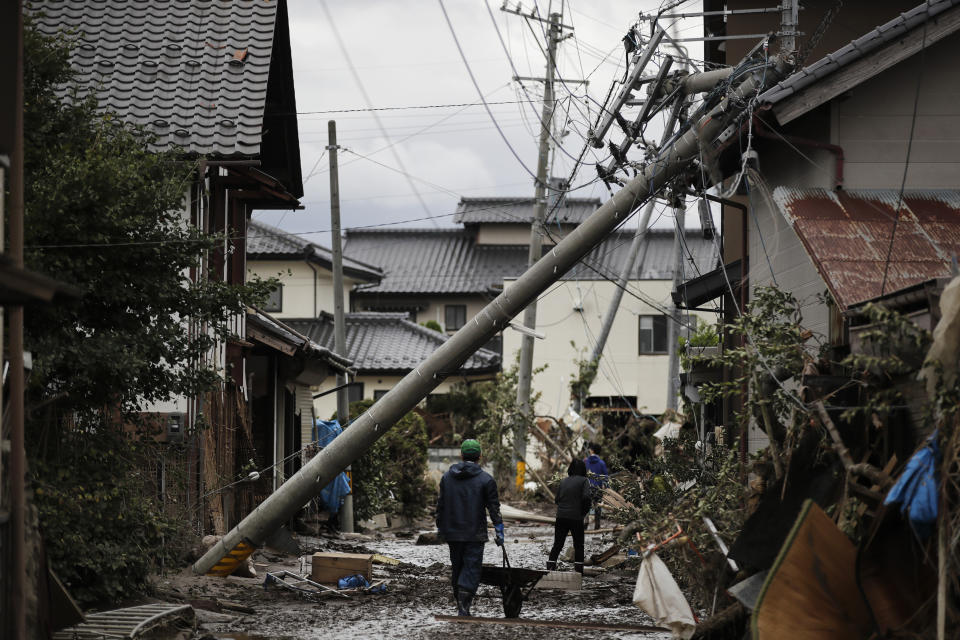
Business appeared nearly back to normal in central Tokyo, and residents in areas where floodwater subsided started cleaning up. Lives, however, remained paralyzed in Nagano, Fukushima and other hard-hit areas that were still inundated.
Some residents in Nagano returned to their homes, only to find they not be habitable.
Retired carpenter Toshitaka Yoshimura, who grew up in the Tsuno district of Nagano, was stunned when he returned to his home after staying at an evacuation center during the storm. His house was a mess. Doors were knocked out, his handmade furniture was tossed around and damaged, and everything from a futon to electronics were broken and covered with mud.
"I put a lot of effort in this house. I made all the furniture with my wife. Now look what happened in one day," he said, with his voice trembling with emotion. "Now this makes me want to cry."
At least some of his memorable photos with his family and relatives were intact, along with toys and games that his younger relatives played when they gathered at his house.
"I'm glad they survived at least," said his nephew Kazuki Yoshimura. "Perhaps we can still do something about the house, but nothing can be more precious than life."
In Fukushima, 11 bags containing possibly radioactive soil and debris removed as part of decontamination efforts from the 2011 meltdown of the Fukushima Dai-ichi nuclear plant were washed from two outdoor temporary storage sites and found downstream, the Environment Ministry said. Most of the remaining 5,000 bags stacked up at the two sites — one in Tamura city and another in Iitate — remained in place.
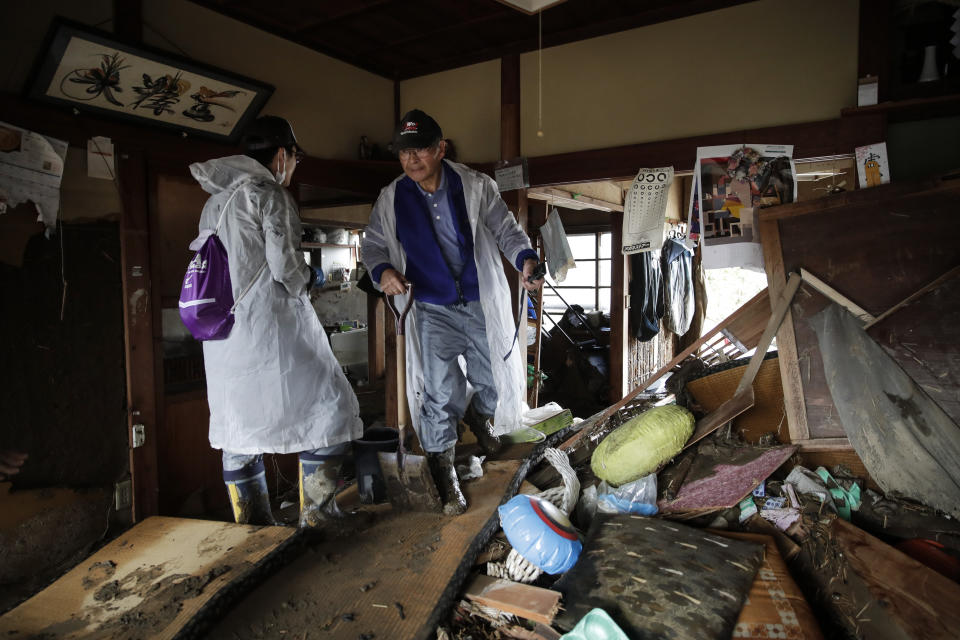
There was no risk to the environment because the waterproof bags were intact and hadn't leaked, the ministry said. It said, however, officials will take preventive measures ahead of future rainstorms.
A massive number of such bags are still being kept at 760 similar sites across Fukushima. Their transfer to a longer-term storage facility near the plant is expected to be completed by March 2022.
Speaking in parliament, Abe said there are concerns of lasting effects of the storm in hard-hit areas. He pledged speedy support for residents.
Abe said the government is funding the disaster response from the 500 billion yen ($4.6 billion) special reserve from the fiscal 2019 budget and may compile a supplementary budget if needed.
East Japan Railway Co. said its Hokuriku Shinkansen bullet train services connecting Tokyo and Kanazawa were reduced because of flooding of six trains at its railyard in Nagano. The trains sat in a pool of muddy water that was up to their windows.
Questions have been raised about the site of the railyard, which sits in an area noted on a prefectural hazard map as a flood area. Chief Cabinet Secretary Yoshihide Suga said the operator's preparedness should be investigated later but the priority is to get the trains out of the water. Some water has been pumped out, but more than half of the railyard is still underwater. (AP)
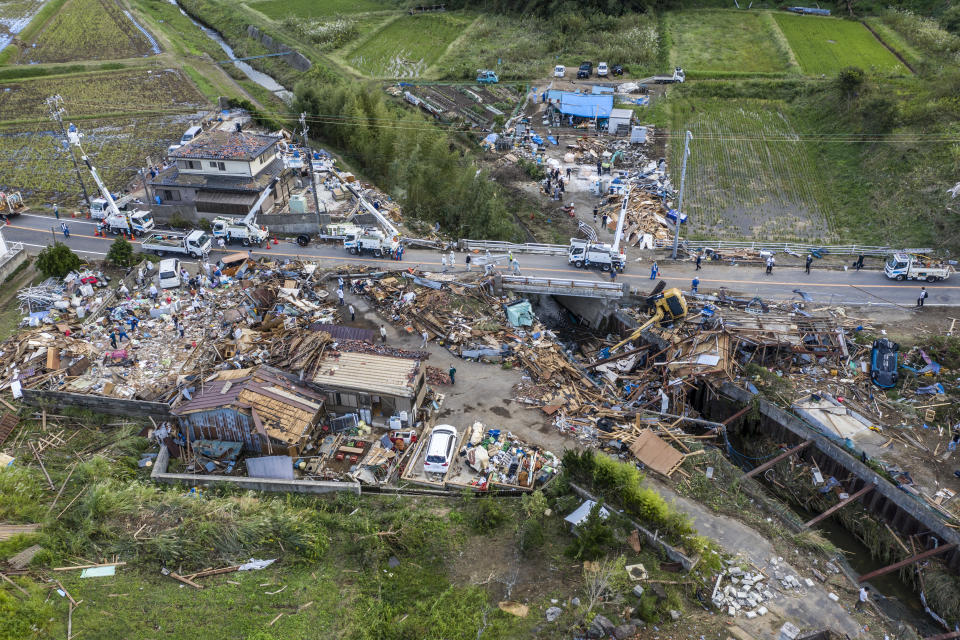
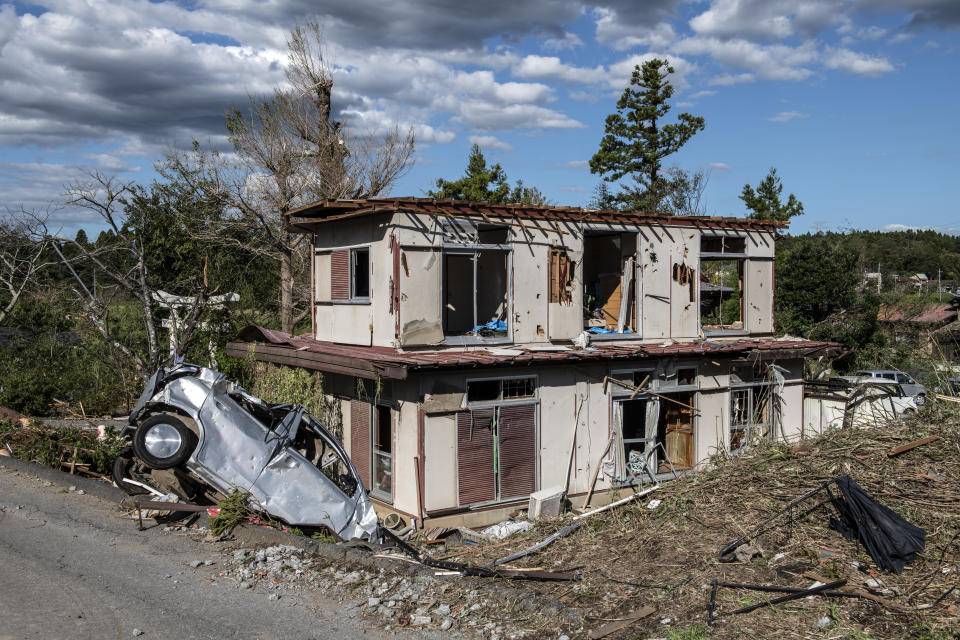
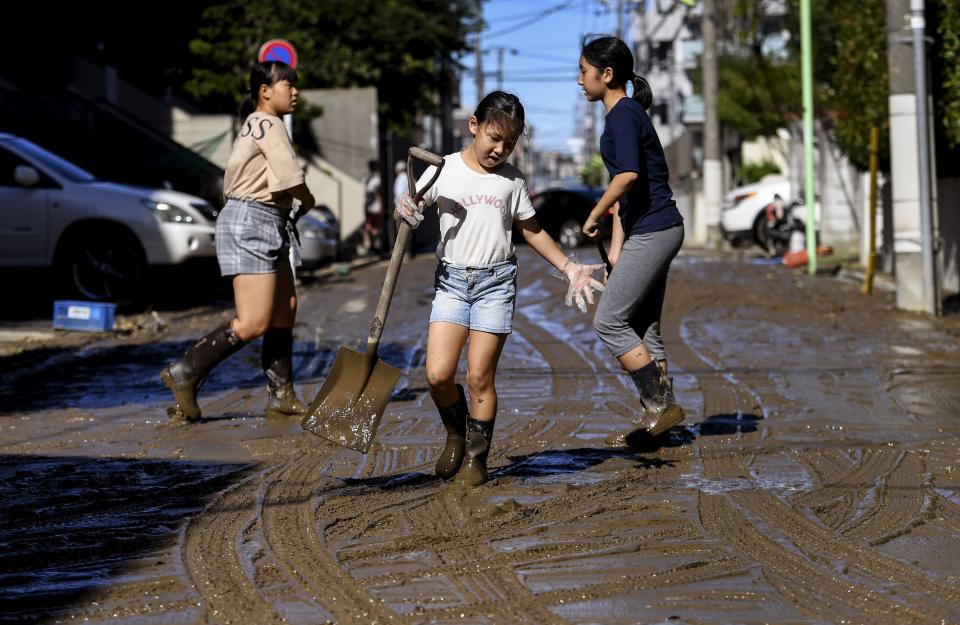
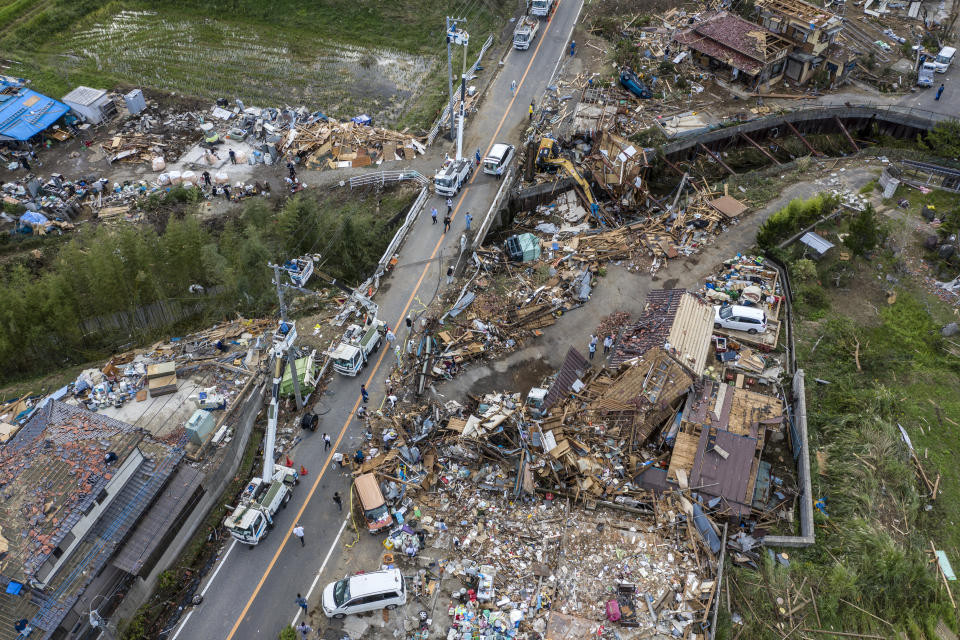
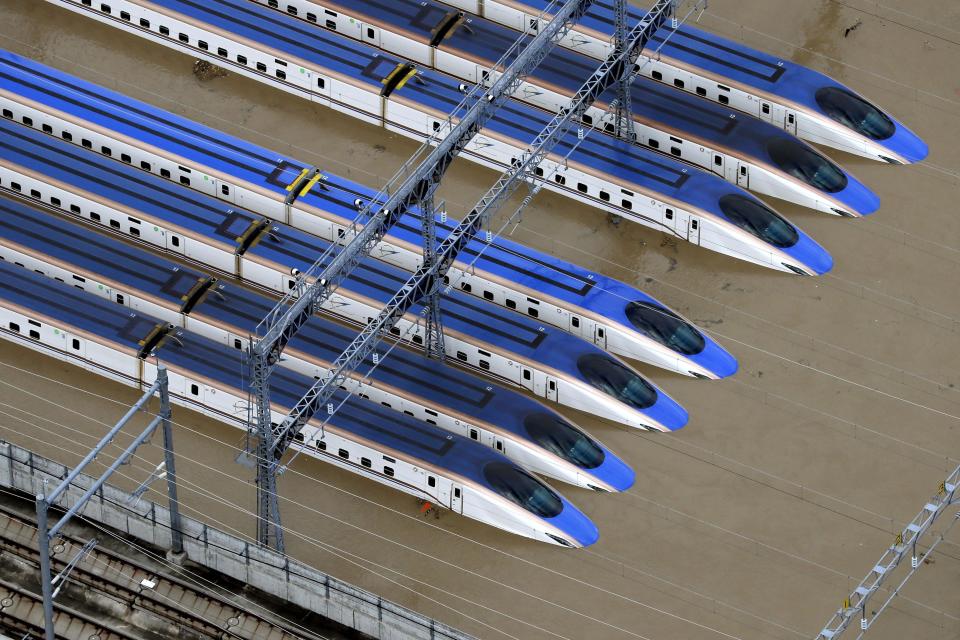
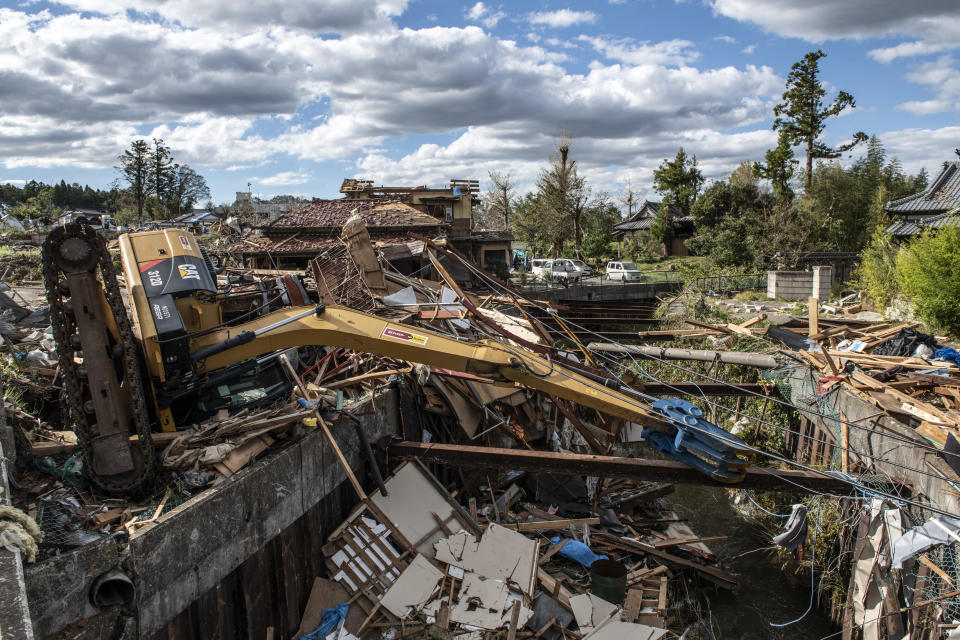
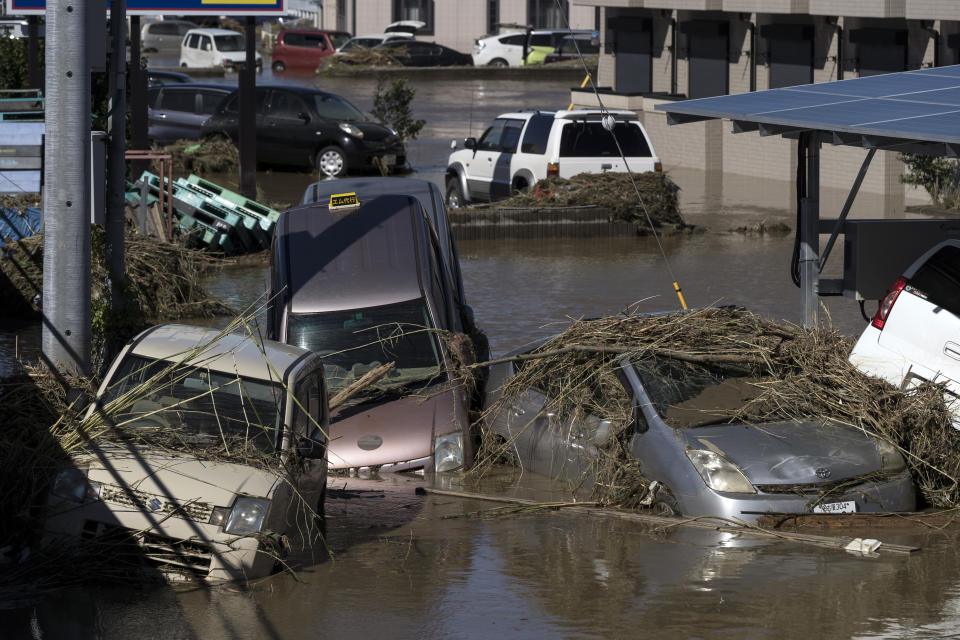
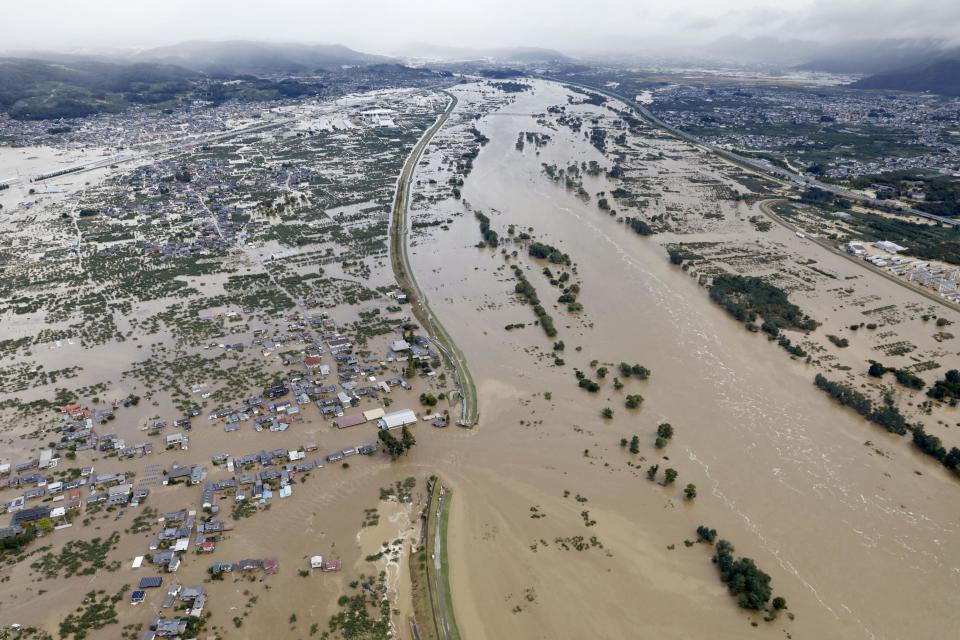
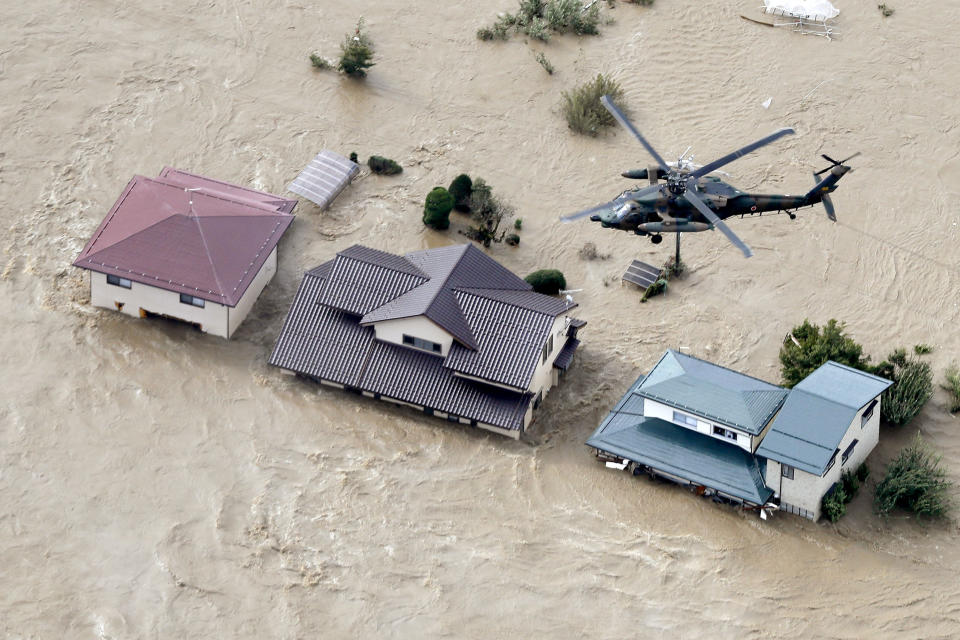
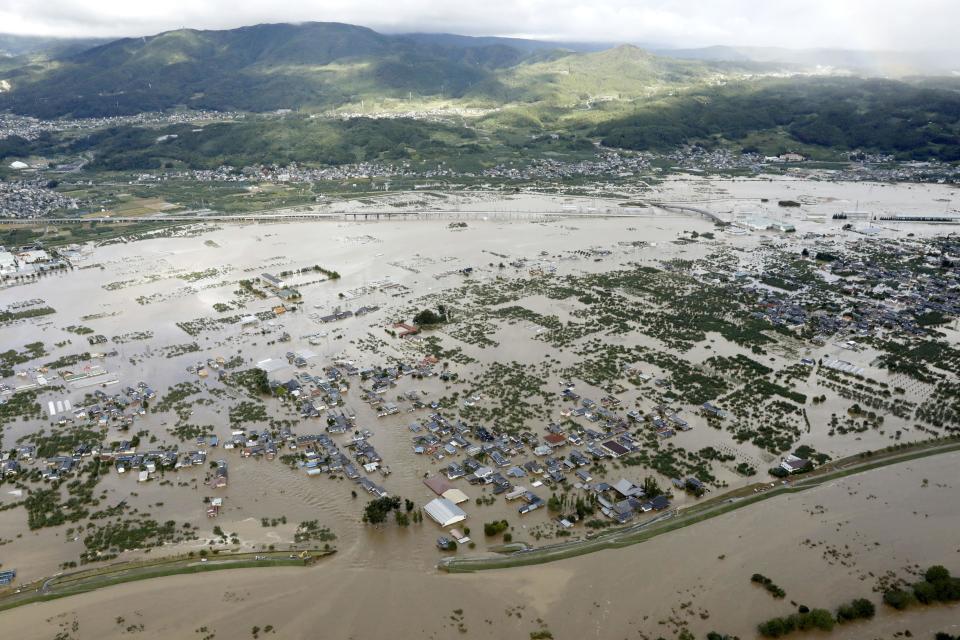
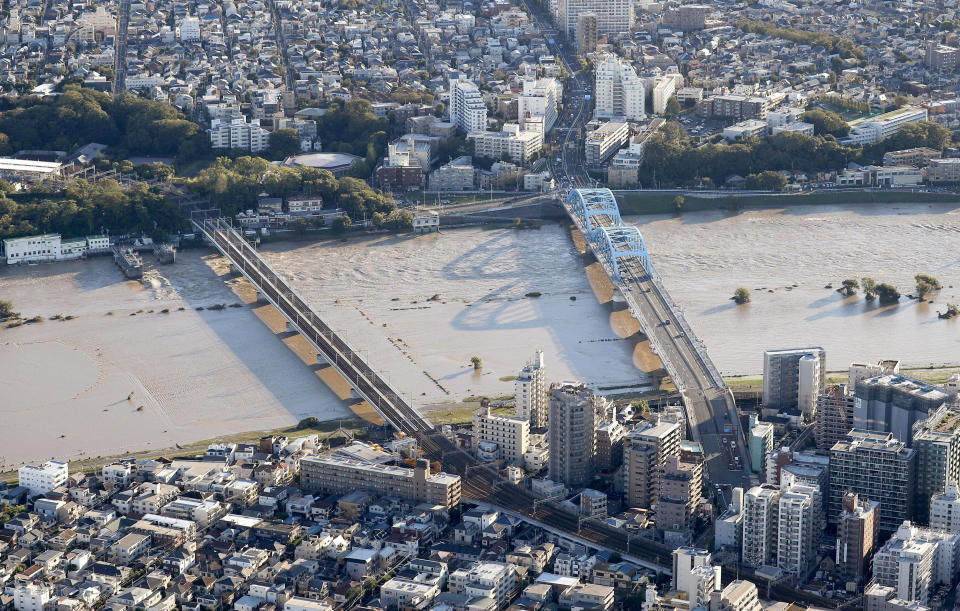
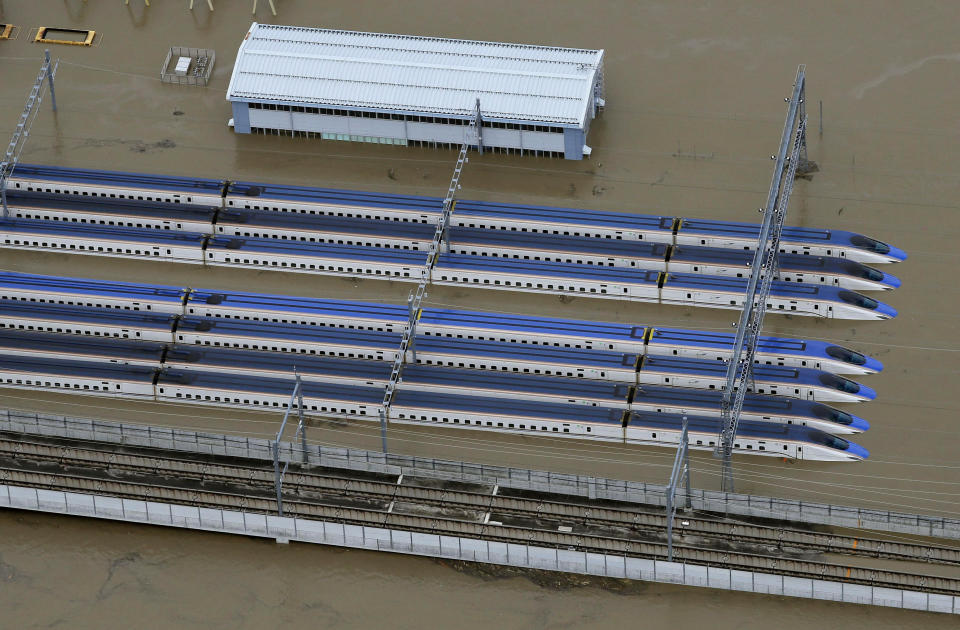
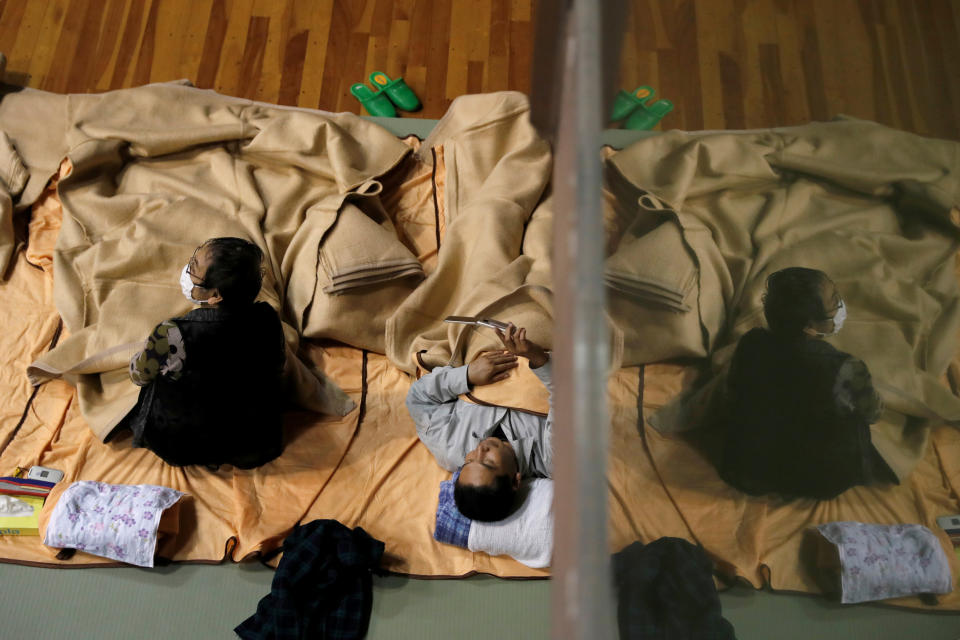
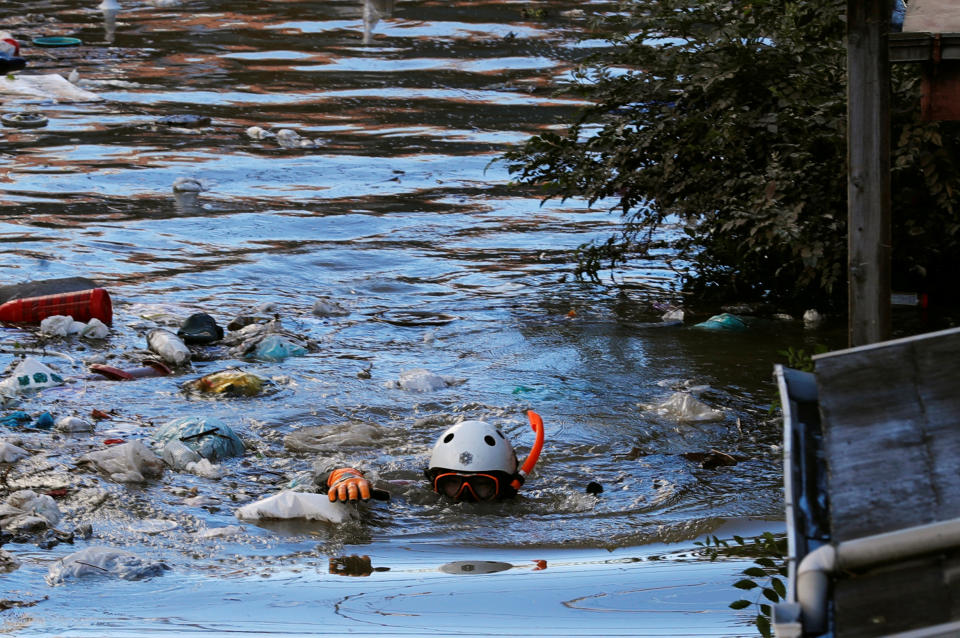
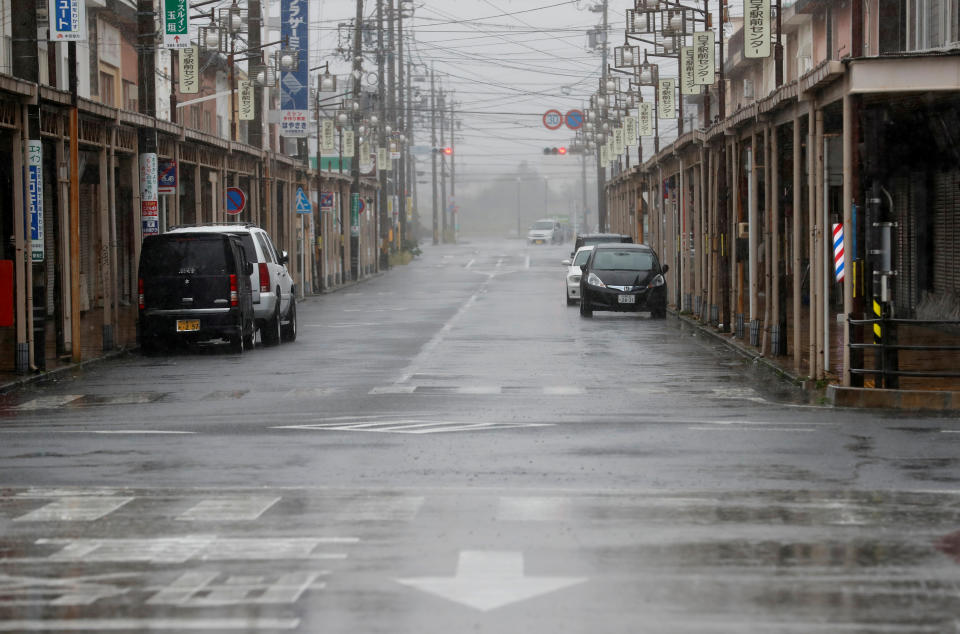
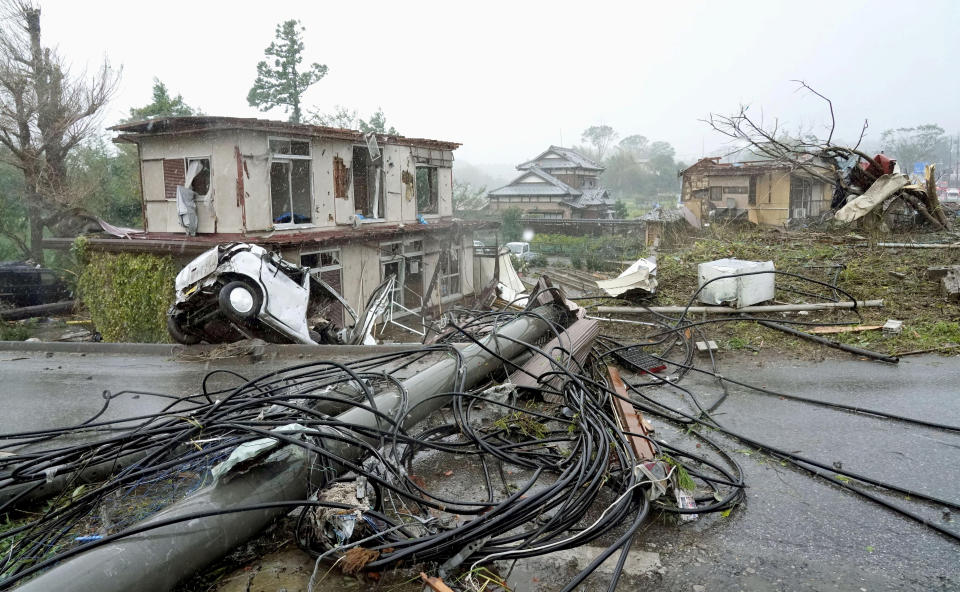

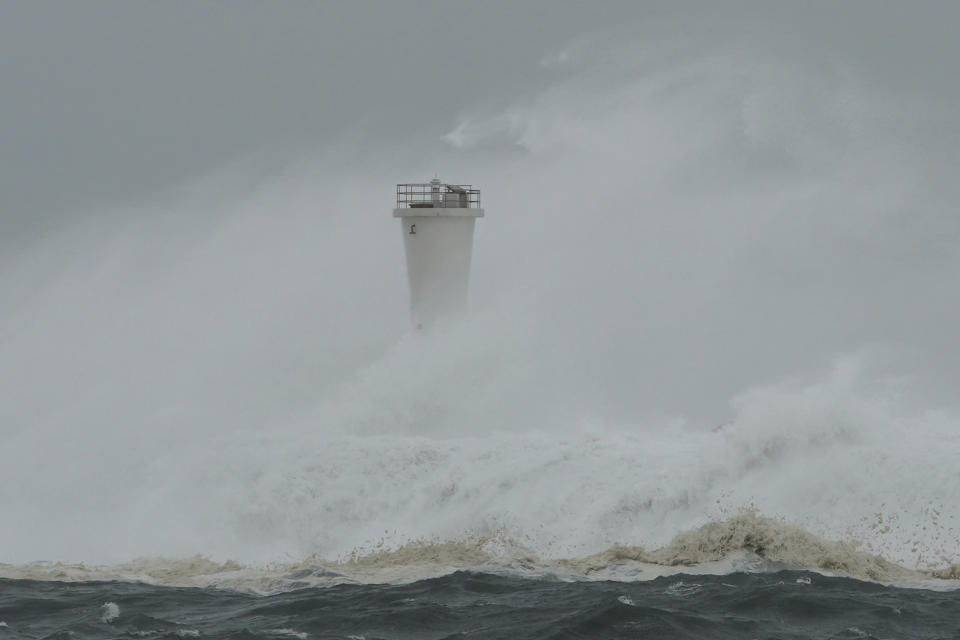
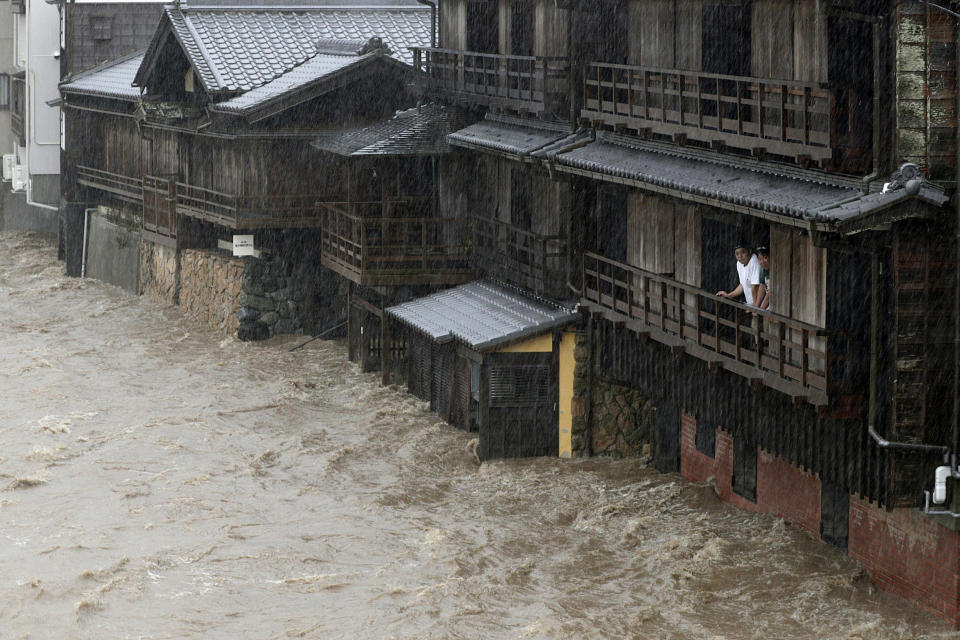
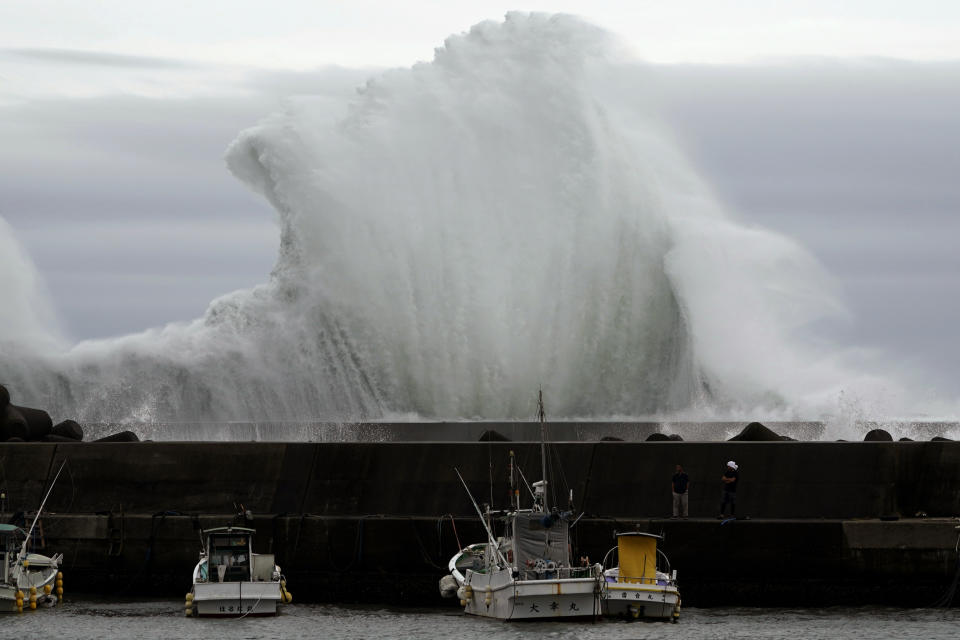
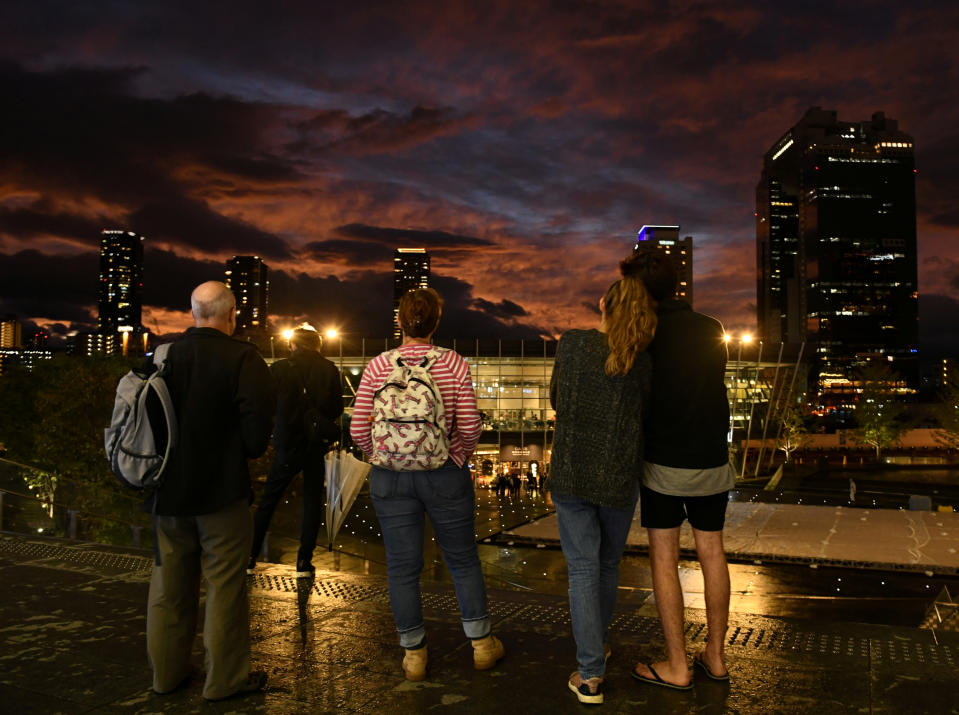
Just as the storm made landfall, Twitter exploded with the hashtag #PrayForJapan as people photographed the pink and purple skies at sundown. One person wrote, “The sky in Japan turned purple hours before the wrath of Super Typhoon Hagibis. A beautiful scene, indeed. But beneath it lies a big catastrophe.” (AP/Yahoo News)
LOOK: The sky in Japan turned pink hours before the wrath of Super Typhoon 🙏🙏
So, I search for the meaning of a Purple Sky? And i found out that... 😭🥺🙏🏻#Hagibis#PrayForJapan pic.twitter.com/h2isOgPIfe— Wency (@sengdayritt) October 12, 2019
— メスゴリラ (@ika_mesugorira) October 11, 2019
空の色がおかしい....
日本が終わる予兆か??? pic.twitter.com/GA5bYH4g74— あらーとくん⚠️ 🅙 (@ara_to1) October 11, 2019
駅からでたら、そこは魔界だった pic.twitter.com/x8blDBthOu
— しう忙多坊 (@Desu_unknown) October 11, 2019
_____
Download the Yahoo News app to customize your experience.
See more galleries from Yahoo News Photo:


